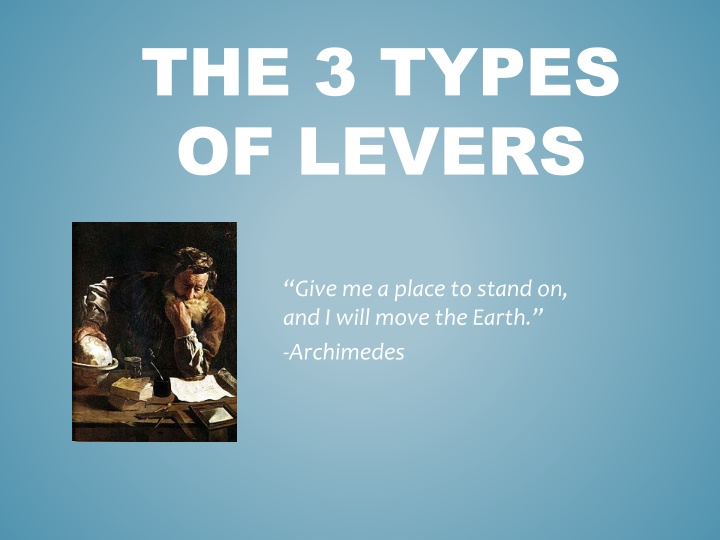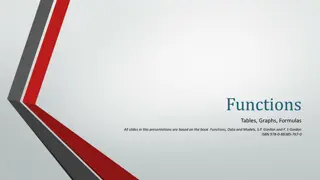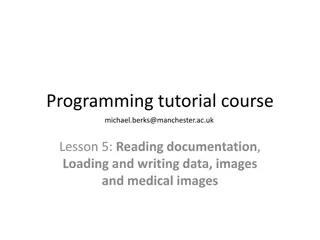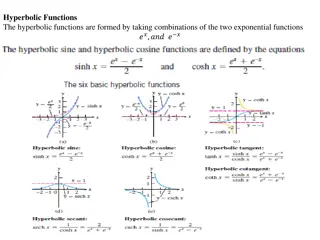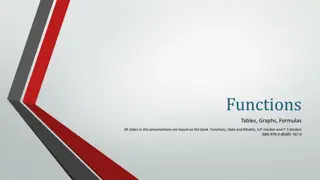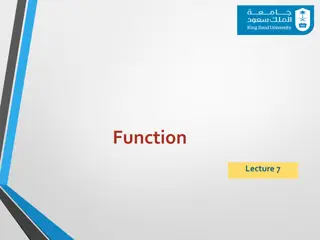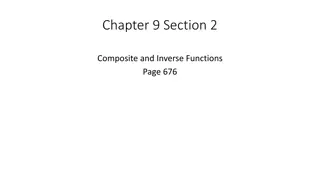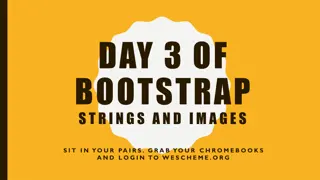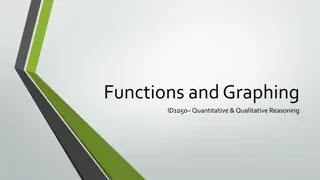Types and Functions
Discover the three types of levers - first, second, and third class - and their components such as the fulcrum, effort, and load. Learn how levers are integral in reducing the force needed to move objects efficiently. Explore the principles behind Archimedes' famous quote and delve into the mechanics of levers with detailed visuals and explanations.
Download Presentation

Please find below an Image/Link to download the presentation.
The content on the website is provided AS IS for your information and personal use only. It may not be sold, licensed, or shared on other websites without obtaining consent from the author.If you encounter any issues during the download, it is possible that the publisher has removed the file from their server.
You are allowed to download the files provided on this website for personal or commercial use, subject to the condition that they are used lawfully. All files are the property of their respective owners.
The content on the website is provided AS IS for your information and personal use only. It may not be sold, licensed, or shared on other websites without obtaining consent from the author.
E N D
Presentation Transcript
THE 3 TYPES OF LEVERS Give me a place to stand on, and I will move the Earth. -Archimedes
A Lever is a simple machine used to decrease the amount of force used to move an object. WHAT IS A LEVER? Math.nyu.edu
Fulcrum This is the point where the lever turns. Effort This is the force used to move the load. It acts in the opposite direction of the weight. Load this is the weight on the lever. It is moved by the force. WHAT ARE THE PARTS OF A LEVER?
FIRST CLASS LEVER Effort Load Fulcrum
SECOND CLASS LEVER Load Fulcrum Effort
THIRD CLASS LEVER Load Fulcrum Effort
